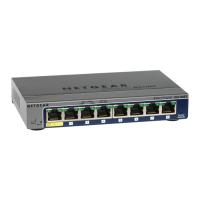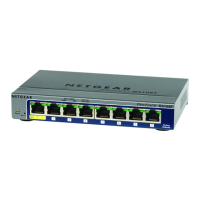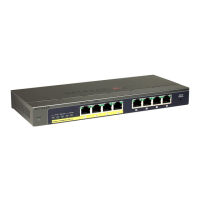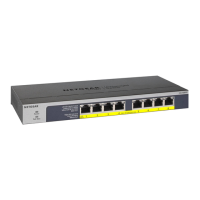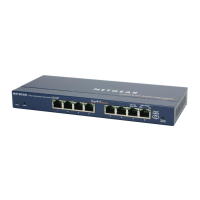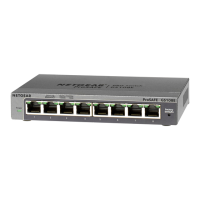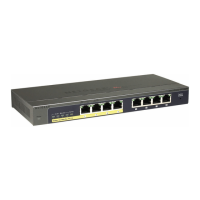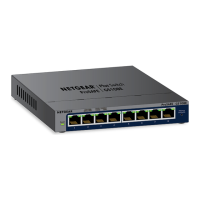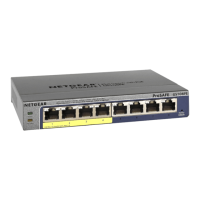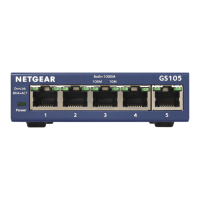8-Port Gigabit (PoE+) Ethernet Smart Managed Pro Switch with (2 SFP or 2 Copper Ports and)
Cloud Management
Configure Quality of Service User Manual282
11. Define the criteria that must be associated the IPv6 DiffServ class:
• Match Every. Select this radio button to add a match condition that considers all
packets to belong to the class.
The only selection from the Match Every menu is Any.
• Reference Class. Select this radio button to reference another class for criteria.
The
match criteria defined in the reference class function as match criteria in addition to
the match criteria that you define for the selected class. After selecting this option, the
classes that can be referenced are displayed. Select the class to reference. A class
can reference one other class of the same type.
• Protocol Type. Select this radio button to require a packet’
s Layer 4 protocol to match
the specified protocol, which you must select from the menu. The menu includes
Other as a selection, which lets you enter a protocol number from 0 to 255.
• Source Prefix/Length. Select this radio button to require a packet’
s source prefix and
prefix length to match the specified source IPv6 prefix and prefix length. Prefix must
always be specified with the prefix length. The prefix can be in the hexadecimal range
from 0 to FFFF:FFFF:FFFF:FFFF:FFFF:FFFF:FFFF:FFFF and the prefix length can
be in the range from 0 to 128.
• Source L4 Port. Select this radio button to require a packet’
s TCP/UDP source port to
match the specified protocol, which you must select from the menu. The range is 0 to
65535. The menu includes Other as an option for unnamed ports.
• Destination Prefix/Length. Select this radio button to require a packet’
s destination
prefix and prefix length to match the specified source IPv6 prefix and prefix length.
Prefix must always be specified with the prefix length. The prefix can be in the
hexadecimal range from 0 to FFFF:FFFF:FFFF:FFFF:FFFF:FFFF:FFFF:FFFF and
the prefix length can be in the range from 0 to 128.
• Destination L4 Port. Select this radio button to require a packet’
s TCP/UDP
destination port to match the specified protocol, which you must select from the menu.
The range is 0 to 65535. The menu includes Other as an option for unnamed ports.
• IP DSCP. Select this radio button to require the packet’
s IP DiffServ Code Point
(DSCP) value to match the specified IP DSCP keyword code, which you must select
from the menu. The menu includes Other as a selection, which lets you enter an IP
DSCP value from 0 to 63. The DSCP value is defined as the high-order 6 bits of the
Service Type octet in the IP header.
12. Click the Apply button.
Your settings are saved.
The following table describes the nonconfigurable information that is displayed in the Class
Summary section.
Table 57. IPv6 DiffServ class configuration class summary
Field Description
Match Criteria The configured match criteria for the specified class.
Values The values of the configured match criteria.
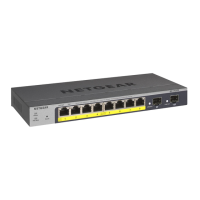
